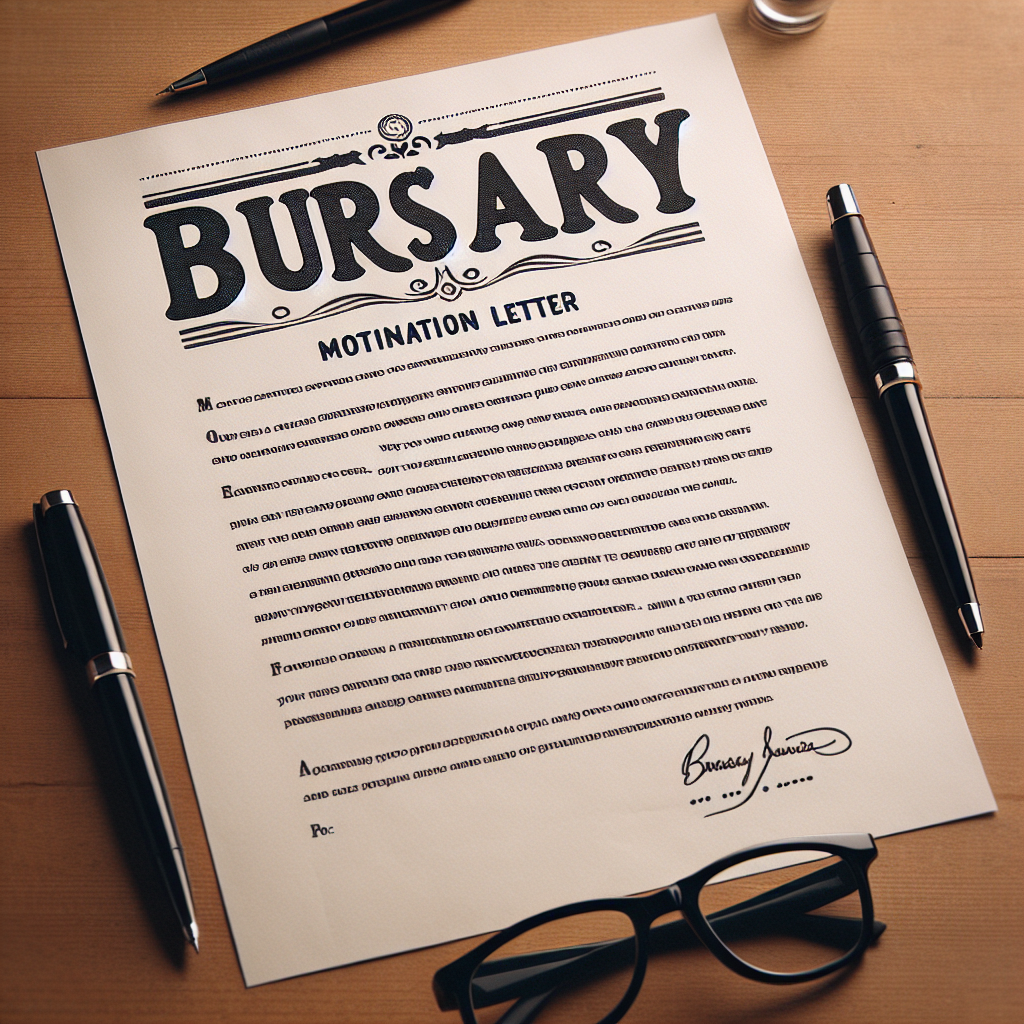Mastering the art of personalization in bursary motivation letters is crucial for standing out in a competitive field. A well-crafted letter can capture the essence of your personality, highlight your academic accomplishments, and demonstrate your financial need effectively.
This article walks you through a detailed process to help you craft a personalized and compelling bursary motivation letter.
Understanding the Purpose of Your Bursary Motivation Letter
The first step in crafting your letter is to understand fully why you are writing it. A bursary motivation letter is not just about requesting financial support; it’s an opportunity to tell your story, making a case for why you deserve this particular support. It’s about connecting your personal journey with your academic goals and showing how the bursary will help you achieve them.
Research the Bursary Provider
Before you begin writing, research the organization or institution offering the bursary. Understanding their goals and values can help you tailor your letter to resonate with them. Look for any specific qualities they are interested in fostering, such as leadership, community service, or innovation, and think about how your experiences and goals align with these qualities.
Outline Your Letter
Start by outlining the key points you want to address in your letter. This outline should include an introduction, body, and conclusion. The structure helps ensure that your letter is logical and coherent, guiding the reader through your motivations, experiences, and financial needs clearly.
- Introduction: Your introduction should grab attention and set the tone for the letter. Begin with a brief personal statement or a compelling story that highlights your passion and drive for your field of study.
- Body: The body of your letter is where you delve into the details. Break it down into paragraphs, each focusing on a different point such as your academic achievements, leadership experiences, community involvement, how you plan to use the bursary, and your career goals.
- Conclusion: Conclude your letter by summarizing the main points and restating your need for the bursary. End with a polite thank you and a statement of hope for consideration.
Personalizing the Content of Your Letter
Your motivation letter should reflect who you are. It should be authentic and personal, providing a glimpse into who you are beyond your grades. Here’s how to add personal touches to the various sections of your letter:
- Academic Achievements: Instead of merely listing your achievements, explain what each achievement means to you and how it relates to your future goals. This could involve discussing the challenges you overcame to achieve them and what you learned in the process.
- Leadership and Community Services: Give specific examples of your leadership and volunteer roles. Tell the story of a particular project or initiative you led and how it made a difference in your community.
- Financial Need: Be open about your financial situation without being overly emotional. Provide specific reasons and situations that show your financial constraints, which make the bursary essential for your education and career plans.
Using the Right Tone
The tone of your motivation letter should be professional yet personal. It should demonstrate respect to the bursary committee and convey earnestness and humility. Don’t be too casual, but also avoid overly formal language that might detach you from your personal experiences.
Review and Revise
After writing your first draft, take a step back and let it sit for a day or two. Then, read it with fresh eyes to catch any inconsistencies or errors. Pay attention to flow, grammar, and punctuation. Ask a mentor or a friend to review it and provide feedback. This step is crucial as it helps polish your letter while ensuring the message remains clear and impactful.
Finalizing Your Letter
Make final adjustments based on the feedback received and ensure your letter is within the required word count. Check if all personal and contact details are correct and that the letter adheres to any specific formatting requirements set by the bursary provider.
The art of personalization in writing a bursary motivation letter lies in your ability to tell your unique story compellingly and vividly. By following these structured steps, you ensure that your motivation letter stands out, making a strong case for why you deserve the bursary. Remember, every sentence of your letter should be aimed at reinforcing your dedication, potential, and need. With a personalized approach, your motivation letter will not just be seen but felt by its readers.
By mastering these elements, you increase your chances of success in securing financial support that can make a significant difference in your educational journey. Personalization doesn’t just enhance your bursary motivation letter; it makes it memorable, fostering a connection with the committee that other applications may lack.
